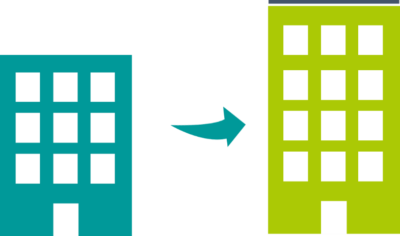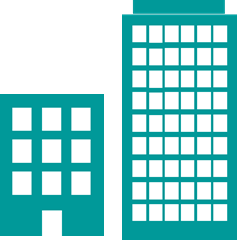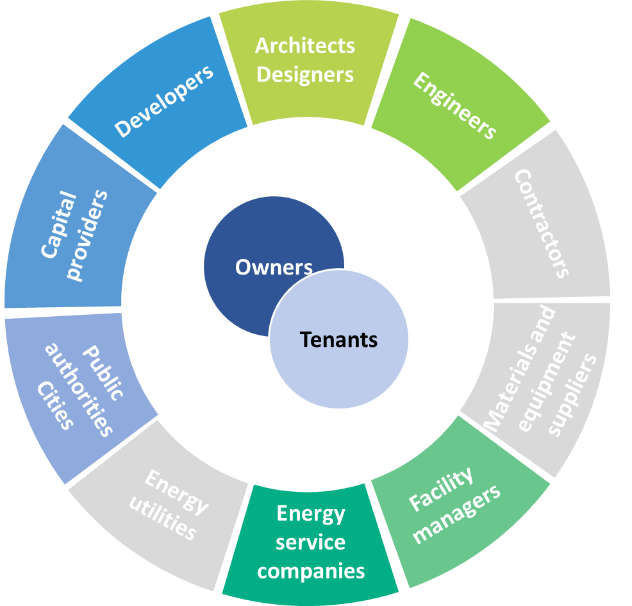Add-on Business Model
Description
The Add-on Business Model is a renovation strategy corresponding to the construction of one (or a set of) additional building unit(s) – like aside or façade additions, rooftop “vertical” extensions or even a new side-building construction – that are added to the existing building when performing renovation works.
When combined with the adoption of EE or RET measures, volume additions are interesting types of intervention since they instantly produce new,  commercially valuable dwelling areas which could compensate the costs of energy-optimisation (thanks to the sale or the rent of the new dwellings).
commercially valuable dwelling areas which could compensate the costs of energy-optimisation (thanks to the sale or the rent of the new dwellings).
"What” (value proposition)
The renovation process in this BM is performed through the addition of volume to the building being it a rooftop “vertical” extension, a façade addition or even a side building. Usually this type of model utilises industrialised construction methods and prefabricated elements in order to shorten project time and reduce the impact on tenants.
The added volume and dwelling area results in a bonus, a complementary economic instrument for the investors (real estate investors, construction companies in conjunction with ESCO, etc.). The Add-on BM may act as an attractor for private sector financing, playing an extremely important role, in particular in contexts of scarce private finance where the search for smart financing of up-front investments is crucial.
"Who” (target customer)
 Preferred target buildings for Add-on Business model are large residential buildings in the need of renovation, in particular traditional building stocks built in the 60s or 70s. Also large non-residential buildings could be targeted by the BM.
Preferred target buildings for Add-on Business model are large residential buildings in the need of renovation, in particular traditional building stocks built in the 60s or 70s. Also large non-residential buildings could be targeted by the BM.
It is also worth mentioning the attractivity of add-ons for single family houses. In this case the financial benefit is not the selling point, but rather the gain in comfort, accessibility and value property generated by a home extension. The decision to extend a home (for instance when a family grows and requires additional space) can therefore be the trigger to carry out a complete energy efficient renovation.
"How” (value chain, activities, resources)
The Add-on Business model usually involves a group of experienced architects and design planners working with a particular attention to building quality and architecture, and its structural characteristics (i.e. its capacity to support an extension).
The involvement of a capital provider is also required: the Add-on strategy indeed requires high up-front costs.
The construction process usually employs industrialized processes and prefabricated elements that will minimize technical issues and disturbance to tenants.
From a social perspective, the proposed approach has to face a major challenge which should not be underestimated: the collection of the consensus from the inhabitants in case of social housing and condominiums.

"Why” (revenue model and cost structure)
The Add-on business model is usually financed by third party. The Add-on (also in combination with RES measures) can be seen by a commercial bank as future revenues for the loan applicant (either from rent or sales).
Results from the ABRACADABRA project prove that additions are very effective in cities and countries characterized by a high real estate value, and by a higher difference among the renovation/construction costs and selling price point per square meter (€) in the reference market. In those cases, the economic gains obtained through the sale can compensate both the investment of the energy retrofit and the cost of renewable energy technologies.
